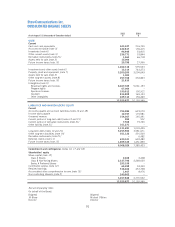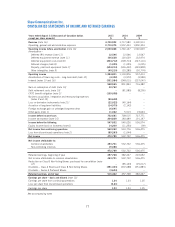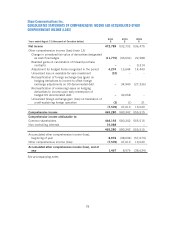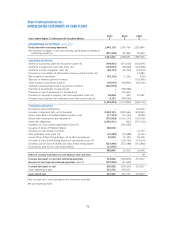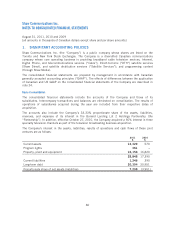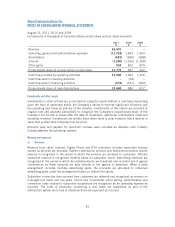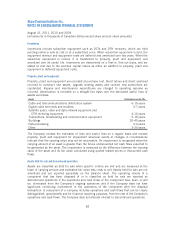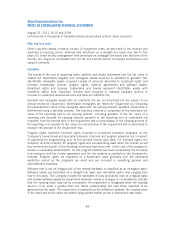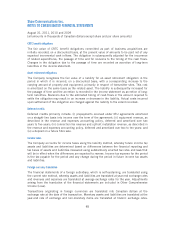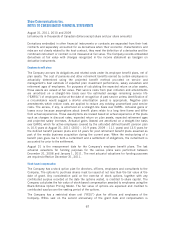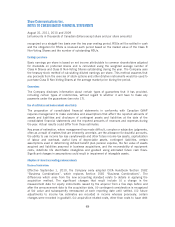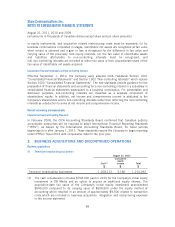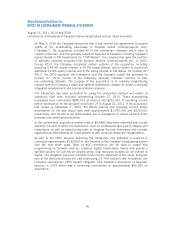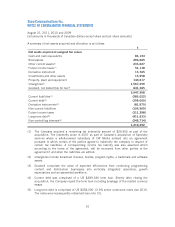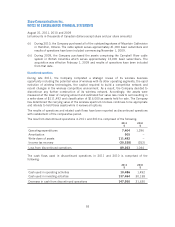Shaw 2011 Annual Report Download - page 89
Download and view the complete annual report
Please find page 89 of the 2011 Shaw annual report below. You can navigate through the pages in the report by either clicking on the pages listed below, or by using the keyword search tool below to find specific information within the annual report.Shaw Communications Inc.
NOTES TO CONSOLIDATED FINANCIAL STATEMENTS
August 31, 2011, 2010 and 2009
[all amounts in thousands of Canadian dollars except share and per share amounts]
CRTC benefit obligations
The fair value of CRTC benefit obligations committed as part of business acquisitions are
initially recorded, on a discounted basis, at the present value of amounts to be paid net of any
expected incremental cash inflows. The obligation is subsequently adjusted for the incurrence
of related expenditures, the passage of time and for revisions to the timing of the cash flows.
Changes in the obligation due to the passage of time are recorded as accretion of long-term
liabilities in the income statement.
Asset retirement obligations
The Company recognizes the fair value of a liability for an asset retirement obligation in the
period in which it is incurred, on a discounted basis, with a corresponding increase to the
carrying amount of property and equipment, primarily in respect of transmitter sites. This cost
is amortized on the same basis as the related asset. The liability is subsequently increased for
the passage of time and the accretion is recorded in the income statement as accretion of long-
term liabilities. Revisions due to the estimated timing of cash flows or the amount required to
settle the obligation may result in an increase or decrease in the liability. Actual costs incurred
upon settlement of the obligation are charged against the liability to the extent recorded.
Deferred credits
Deferred credits primarily include: (i) prepayments received under IRU agreements amortized
on a straight-line basis into income over the term of the agreement; (ii) equipment revenue, as
described in the revenue and expenses accounting policy, deferred and amortized over two
years to five years; (iii) connection fee revenue and upfront installation revenue, as described in
the revenue and expenses accounting policy, deferred and amortized over two to ten years; and
(iv) a deposit on a future fibre sale.
Income taxes
The Company accounts for income taxes using the liability method, whereby future income tax
assets and liabilities are determined based on differences between the financial reporting and
tax bases of assets and liabilities measured using substantively enacted tax rates and laws that
will be in effect when the differences are expected to reverse. Income tax expense for the period
is the tax payable for the period and any change during the period in future income tax assets
and liabilities.
Foreign currency translation
The financial statements of a foreign subsidiary, which is self-sustaining, are translated using
the current rate method, whereby assets and liabilities are translated at year-end exchange rates
and revenues and expenses are translated at average exchange rates for the year. Adjustments
arising from the translation of the financial statements are included in Other Comprehensive
Income (Loss).
Transactions originating in foreign currencies are translated into Canadian dollars at the
exchange rate at the date of the transaction. Monetary assets and liabilities are translated at the
year-end rate of exchange and non-monetary items are translated at historic exchange rates.
85



